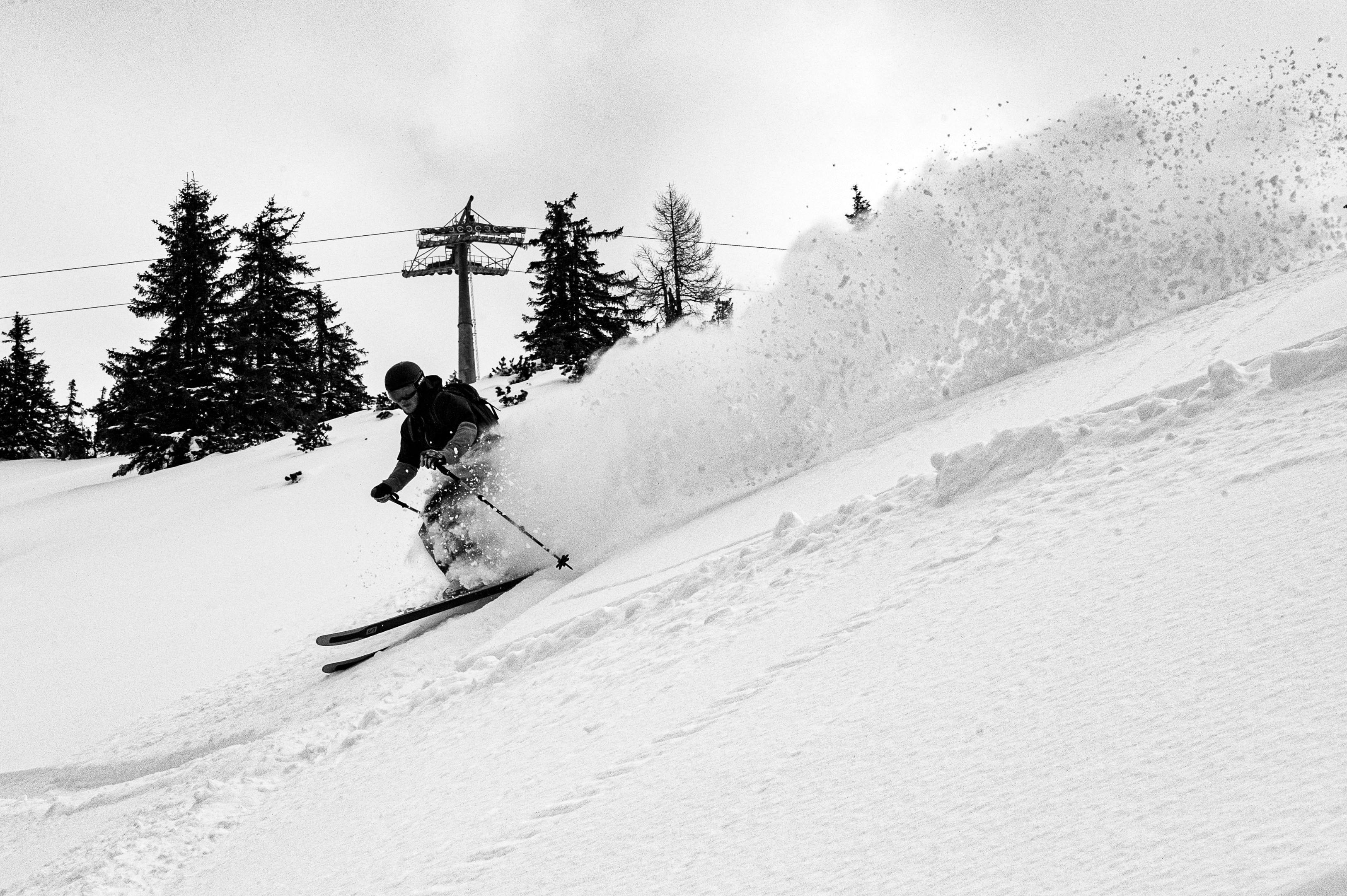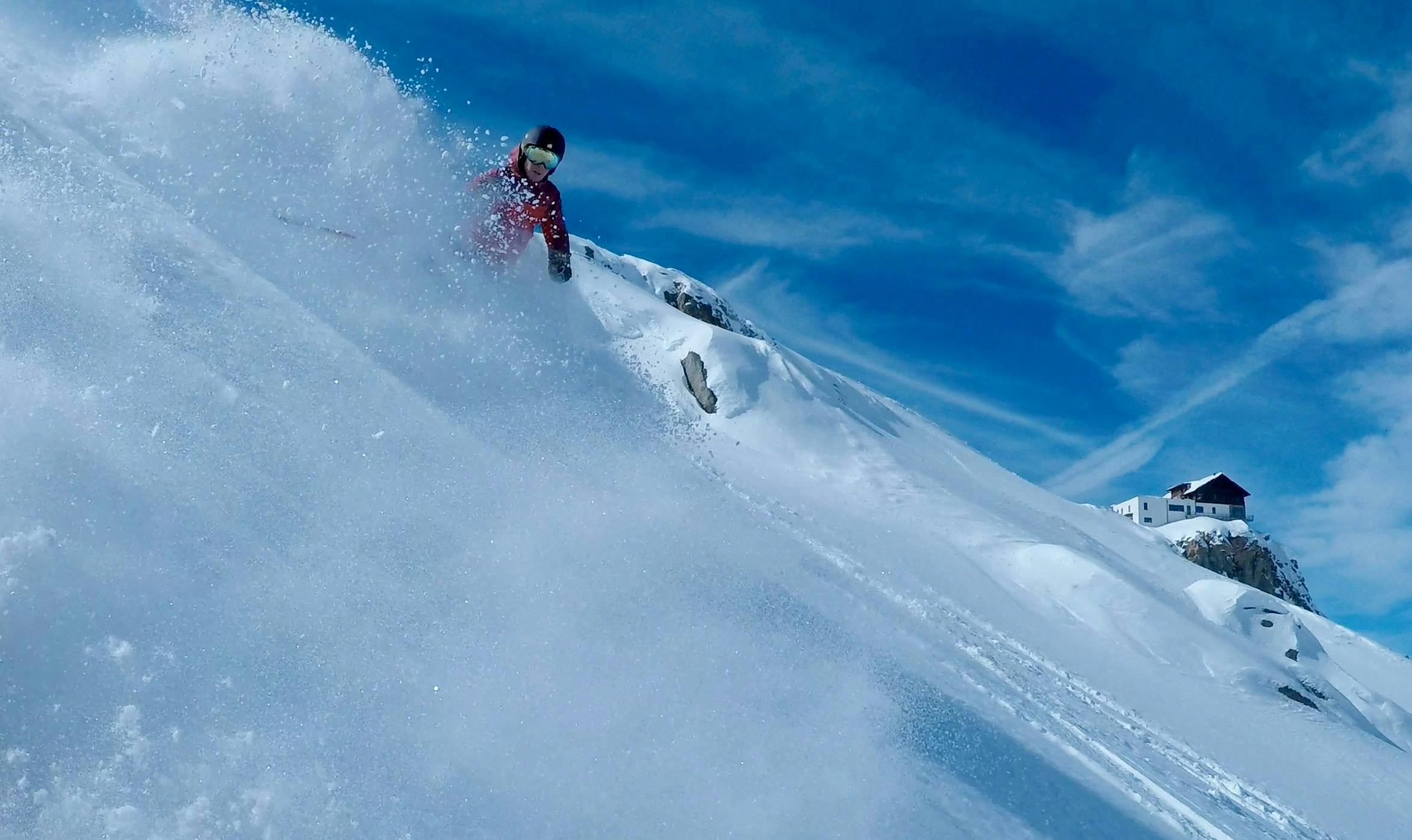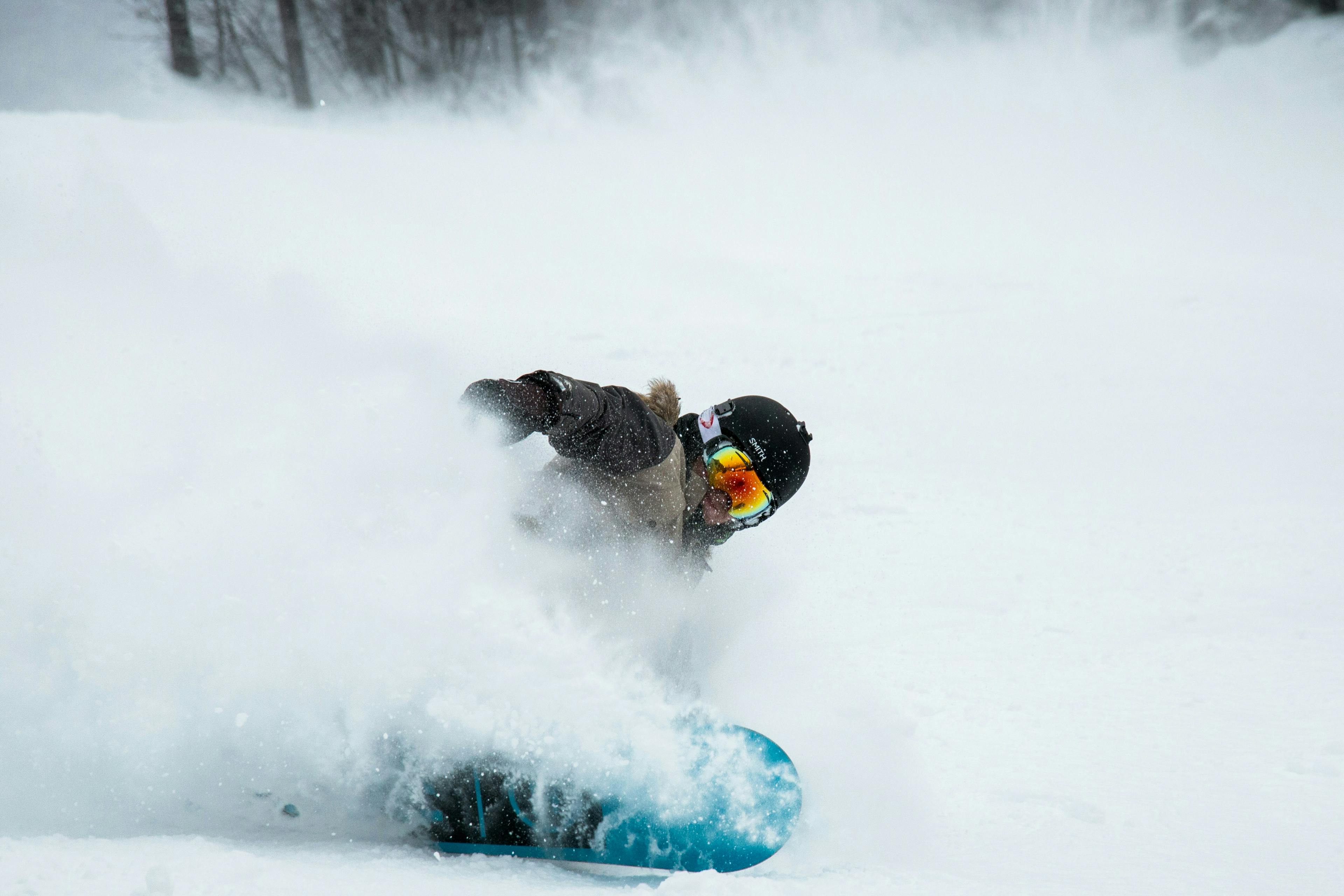- Ski.com Home
- Blog
- How to Ski Powder | A Guide by Ski.com
How to Ski Powder | A Guide by Ski.com

Skiing through knee- or waist-deep powder, whether beneath a clear blue sky or among softly falling snow in the trees, epitomizes the ultimate skiing experience. Ask any skier or snowboarder, and they'll describe the sensation of skiing on powder as akin to floating on clouds—a weightless, euphoric experience that draws enthusiasts back year after year. This passion drives them to meticulously follow long-range snow forecasts and real-time reports in pursuit of the perfect powder day.

For aspiring or intermediate powder skiers, this dream can easily become a source of frustration without the right techniques and mindset. At Ski.com, we believe the enchantment of powder skiing is a universal experience. That’s why we chatted with Alta, Utah-based PSIA-certified instructor Stephen Helfenbein to to share his expert tips. Stephen, a member of the National Demo Team and Educational Manager for the Intermountain Division, knows exactly how to help you master powder skiing and experience its full glory.

Get in the right headspace
Before you even hit the slopes, you need the right mindset. As Stephen explains, powder skiing requires a “willingness to go faster than you think you should and be ready to point your skis down the fall line. Let gravity take you—don’t fight it. Surrender to the powder.”
It’s normal to feel hesitant but keep in mind: if you fall, you’re landing in soft, forgiving snow. Embrace the adventure and let the snow guide you.

Choose the right equipment makes it easier
Fat skis are your best friend in powder. These skis, wider than your average skis, provide the flotation you need for an effortless ride. Stephen recommends renting or demo’ing skis with a generous waist width and tip rocker, which helps the tips rise above the snow, requiring less effort to stay afloat.
However, equipment alone won’t make you a powder pro. “Powder skiing perfection comes with practice and patience,” Stephen notes. Don’t rely solely on your gear—hone your skills alongside it.
Fundamental movements: flexing and extending
It’s all about pushing and pulling, flexing, and extending. You want to create a rebound. It’s the opposite of what on-piste skiers are used to, says Stephen. You aren’t turning your skis a lot. Powder skiing is a lot more three-dimensional, you’re attempting to make your tips go in and out of the snow.
There is a teaching method at Alta’s Alf Engen Ski School called the Alta Start which activates these movements. If you’re willing to try the Alta Start on your own, Stephen recommends finding terrain where you’d feel comfortable going straight and there’s some soft snow. Practice “porpoise-ing,” i.e. pushing skis down into the snow and letting them pop up.
To get pupils to do this, Stephen says, “I’ll have them kick their tails into the snow, so they’re pointing straight down the hill to get that ideal fall line orientation.” Then, the key is to gain some speed while facing downhill before you start pressuring the ski.
Also, good powder turns are shallow or less curvy. This is important because it’s almost impossible to generate rhythm when turning if you’re starting them across the hill.
The final key element is the tempo of your pole plant. Many newbies mistakenly make quick pole plants. A good powder skier will have a much slower pole swing, like “1…2…3…” says Stephen. The movements are slower when skiing in powder, he says, almost like slow motion, but you want to be moving fast and down the fall line of the slope ahead.
Stay patient. Powder skiing isn’t easy.
It’s easy to get frustrated if you don’t master powder skiing right away. Powder movements are counterintuitive to the hardpack techniques many skiers know. “One of the biggest challenges for new powder skiers is overcoming the habit of twisting skis sharply across the hill,” Stephen explains. Powder skiing is all about control through resistance (flexing and extending), rather than turning. Make that your mantra if you’re having trouble; it’s more mental than physical.
Another common mistake? Sitting back to keep your tips above the snow. This actually makes it harder to control your skis. Instead, apply pressure to your tips to feel the rebound that drives smooth, rhythmic turns. When done right, it should be effortless.
How to take your powder skiing to the next level
Once you’ve mastered the Alta Start, you want to start focusing on aggressively pressuring the ski to get them to dive deeper and load them up like a bow, says Stephen. When the ski pops up out of the snow, you want to provide them with a redirection (turn) and then start pressuring them aggressively again.
The end game is to create fluid, fall-line turns with no tracks across the hill.
Where can you ski powder?
Powder skiing is possible at most ski resorts, but snowfall can vary greatly based on location and climate patterns like El Niño or La Niña. Some resorts consistently deliver exceptional powder conditions. Here are a few of the best ski resorts for powder:
- Alta, Utah: Known for light, fluffy snow and terrain perfect for powder skiers.
- Jackson Hole, Wyoming: Offers steep, challenging runs with legendary snow quality.
- Snowbird, Utah: Often paired with Alta, this resort gets over 500 inches of annual snowfall.
For more ideas, consult with one of our Ski.com Mountain Travel Experts to explore resorts with high average snowfall and top-rated powder skiing schools.
Quick Tips for Powder Skiing
- Mindset: Embrace speed and trust the yourl line.
- Equipment: Use fat skis with tip rocker for better float.
- Movements: Focus on flexing and extending rather than turning sharply.
- Pole Plants: Keep them slow and rhythmic for balance.
- Practice: Be patient—powder skiing takes time to master.
Ready to Ski Powder Like a Pro?
Powder skiing offers an unparalleled experience that keeps skiers coming back season after season. With the right equipment, techniques, and mindset, even beginners can enjoy the thrill of floating through fresh snow. Whether you’re chasing powder at Alta or carving through untouched snow at Jackson Hole, Ski.com’s Mountain Travel Experts are here to make your dream powder vacation a reality.
Ready to experience the Shangri-la of skiing? Book your powder ski trip today! Our 65+ Mountain Travel Experts are standing by for your call at 800-610-8911. They can provide recommendations on powdery destinations and top powder ski schools, as well as book your complete vacation package. You can also get started by filling out a free custom form.
TAGGED: how to ski powder
Leah Fielding
Author
Latest blogs
View AllHow Our Free White (Ski) Glove Service Works:
Reach out to a Ski.com Mountain Travel Expert by phone, chat, or our online form. Share details about your group size, interests, and budget and your Expert will begin to craft your dream ski vacation.
Get a curated proposal with personalized suggestions from your Expert via email. Book directly online or request additions or revisions from your Expert until it’s perfect.
If you have questions, want to add or modify your reservations or need anything assistance, your Expert is always by your side to help before, during and after your trip.
Sign up for our newsletter
Sign up for exclusive offers, news, updates and more.




